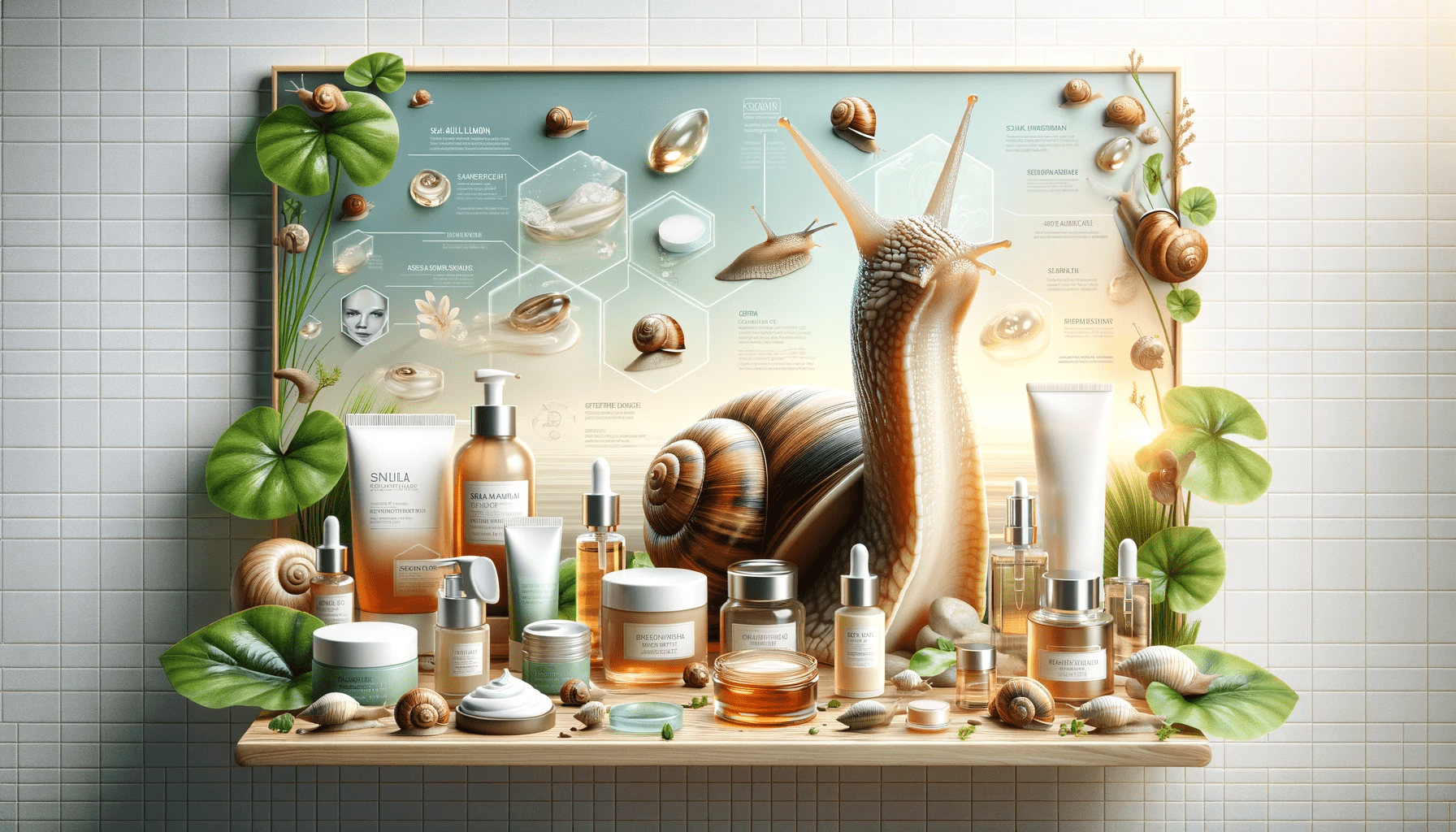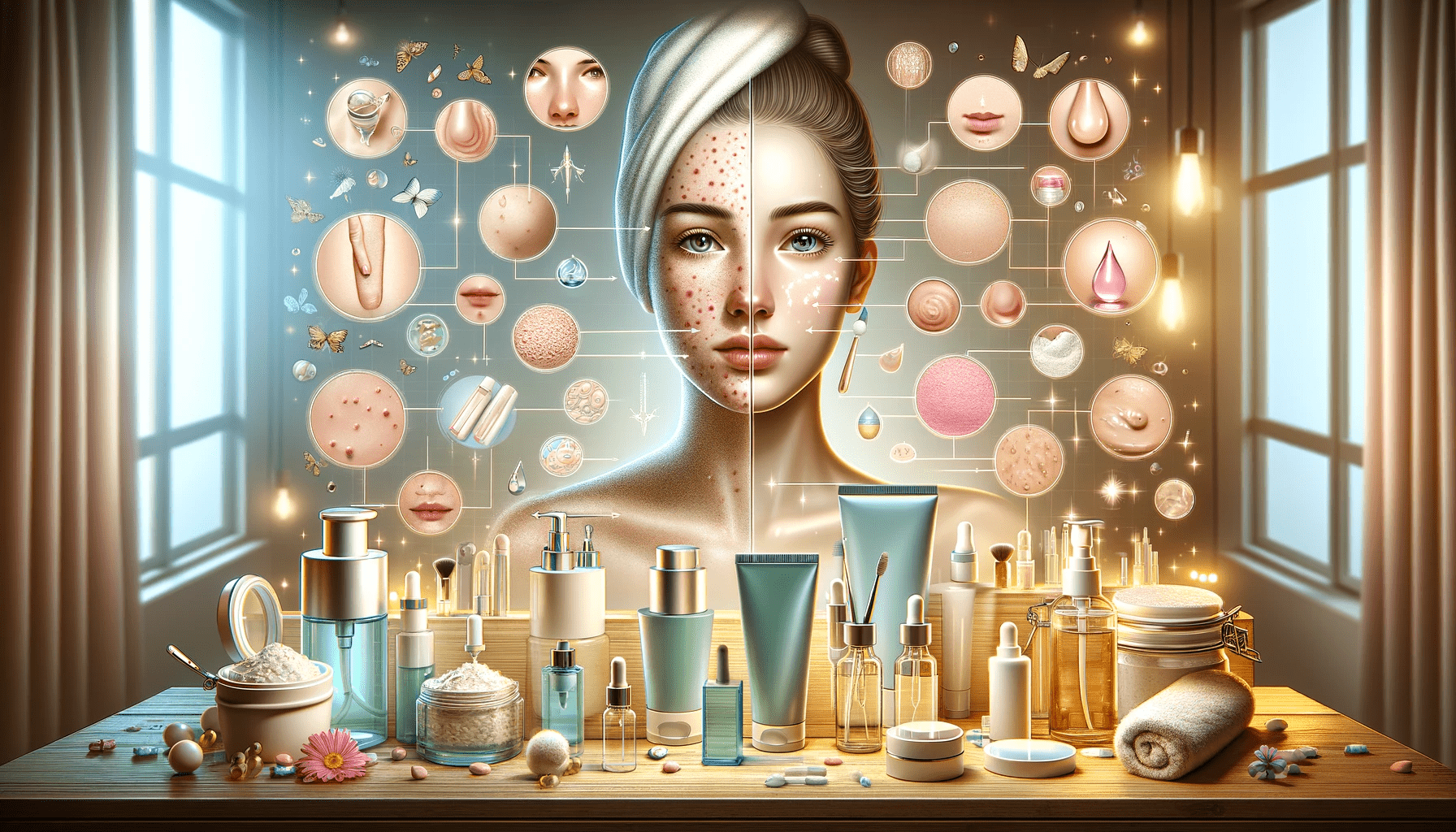
Snail mucin, the slimy extract from snails, has evolved from its modest beginnings to emerge as a pivotal ingredient in skincare. Celebrated for its healing qualities since antiquity, snail mucin has gained recognition for its capacity to revitalize skin, accelerate healing, and deliver unmatched hydration. This article explores the scientific foundation of snail mucin's advantages, unveiling how this natural marvel can revolutionize skincare practices.
1. Composition and Properties
Snail mucin comprises a rich blend of proteins, glycoproteins, hyaluronic acid, antioxidants, enzymes, antimicrobial, and copper peptides, among others. Its distinctive composition underlies its broad spectrum of skin benefits.Healing and Regeneration: Enriched with glycoproteins and copper peptides, snail mucin boosts skin regeneration and healing. Research, including a study in the "Journal of Drugs in Dermatology," underscores its role in enhancing wound recovery and minimizing scar appearance【1】.
2. Hydration and Moisturization
The hydrating power of snail mucin is among its most lauded features. Abundant in hyaluronic acid, it possesses the capacity to retain up to 1,000 times its weight in water, establishing it as an exceptional component for profound skin moisture.Strengthened Skin Barrier: Studies, such as those published in "Skin Pharmacology and Physiology," show that snail mucin bolsters skin barrier function, thus averting moisture loss and sustaining skin hydration【2】.
3. Anti-aging Effects
The anti-aging prowess of snail mucin chiefly stems from its efficacy in encouraging collagen synthesis, courtesy of the copper peptides and hyaluronic acid it contains. This leads to diminished wrinkles and fine lines, alongside enhanced skin firmness.Collagen Stimulation: A study featured in "International Journal of Dermatology" showed that topical application of snail mucin leads to increased collagen production in the skin, helping to combat signs of aging【3】.
4. Acne Treatment and Skin Texture Improvement
The antimicrobial abilities of snail mucin, coupled with its skills to exfoliate and diminish inflammation, render it potent for acne management and skin texture refinement.Acne and Scar Improvement: According to research published in "Dermatologic Surgery," snail mucin has been observed to reduce acne lesions and acne scarring, thanks to its antimicrobial and regenerative properties【4】.

5. Brightening and Pigmentation Reduction
Snail mucin is packed with components like glycolic acid, which supports skin exfoliation and mitigates hyperpigmentation, resulting in a uniform skin tone and a luminous complexion.Pigmentation Reduction:
An article in "Clinical, Cosmetic and Investigational Dermatology" highlighted the efficacy of glycolic acid, found in snail mucin, in reducing hyperpigmentation and improving overall skin brightness【5】.6. Soothing and Anti-inflammatory Effects
Snail mucin's anti-inflammatory properties are excellent for calming irritated skin, minimizing redness, and tackling inflammation, proving beneficial for sensitive skin types.Soothing Irritated Skin:
Studies, such as those published in "Inflammation Research," have shown that snail mucin exerts a soothing effect on irritated and inflamed skin, thanks to its anti-inflammatory components【6】.Conclusion
Snail mucin stands out as a versatile skincare ingredient, offering a wealth of benefits ranging from hydration and anti-aging to calming and restorative effects. Its natural formulation, abundant in advantageous compounds, makes it a formidable skincare ally for addressing various concerns. Despite initial reservations about applying snail secretion, the scientific backing for its effectiveness is solid. As with any skincare product, outcomes can differ among individuals, and performing a patch test is advisable before introducing new elements into your skincare regimen.References:
"Journal of Drugs in Dermatology" on the wound healing properties of snail mucin."Skin Pharmacology and Physiology" on snail mucin's impact on skin hydration and barrier function.
"International Journal of Dermatology" on the collagen-stimulating effects of snail mucin.
"Dermatologic Surgery" on the treatment of acne and scarring with snail mucin.
"Clinical, Cosmetic and Investigational Dermatology" on the use of glycolic acid for pigmentation issues.
"Inflammation Research" on the anti-inflammatory effects of snail mucin.
FAQ
Can I use snail mucin every day?
Yes, snail mucin can be used daily as part of a skincare routine. It is known for its hydrating and regenerative properties, making it suitable for daily application. Snail mucin is generally considered safe for all skin types, including sensitive skin (Fabi, S.G., et al., 2013).Are snails killed in snail mucin?
The collection of snail mucin for cosmetic products does not necessarily require killing the snails. The mucin can be harvested by stimulating the snails in a way that causes them to produce and secrete mucin without harming them. However, ethical practices vary by manufacturer, so it's essential to research brands that commit to cruelty-free methods (Tsoutsos, D., et al., 2009).Is snail mucin better than hyaluronic acid?
Snail mucin and hyaluronic acid both offer hydrating benefits, but they work in slightly different ways and offer additional unique benefits. Snail mucin contains a complex mix of peptides, glycosaminoglycans, hyaluronic acid, enzymes, and other molecules that promote skin healing, elasticity, and moisture. Hyaluronic acid specifically excels at hydration and plumping the skin. The choice between them depends on specific skin concerns and desired outcomes (Fabi, S.G., et al., 2013).How long does it take for snail mucin to work?
The time it takes for snail mucin to show results can vary depending on the individual's skin type, the condition being treated, and the concentration of the product used. Some users report seeing improvements in hydration and texture within a few days, but more significant results, especially concerning scars or wrinkles, may take several weeks to months of consistent use (Fabi, S.G., et al., 2013).Should I use snail mucin in the morning or night?
Snail mucin can be used both in the morning and at night. Its lightweight, hydrating properties make it suitable for daytime use under sunscreen and makeup. Applying it at night can also enhance skin repair and regeneration during sleep (Fabi, S.G., et al., 2013).What not to mix with snail mucin?
Generally, snail mucin can be safely combined with most skincare ingredients. However, caution should be taken when mixing it with high concentrations of direct acids (like AHAs and BHAs) or retinoids, as this could potentially irritate the skin, especially for those with sensitive skin types. It’s always a good idea to patch test when introducing new combinations into your skincare routine.Is snail mucin really worth it?
Many users and studies report positive outcomes from using snail mucin, including improved hydration, reduced acne scarring, and diminished fine lines. The effectiveness can vary among individuals, but its wide range of skin benefits makes it a valuable addition to many skincare routines (Fabi, S.G., et al., 2013).How quickly does snail mucin work?
As mentioned, some users might notice immediate hydration benefits, but for more significant skin concerns like scars or wrinkles, consistent use over weeks to months is typically necessary for noticeable results (Fabi, S.G., et al., 2013).For personalized advice, especially when considering high doses or if you have specific health conditions, consulting a dermatologist or skincare professional is recommended.